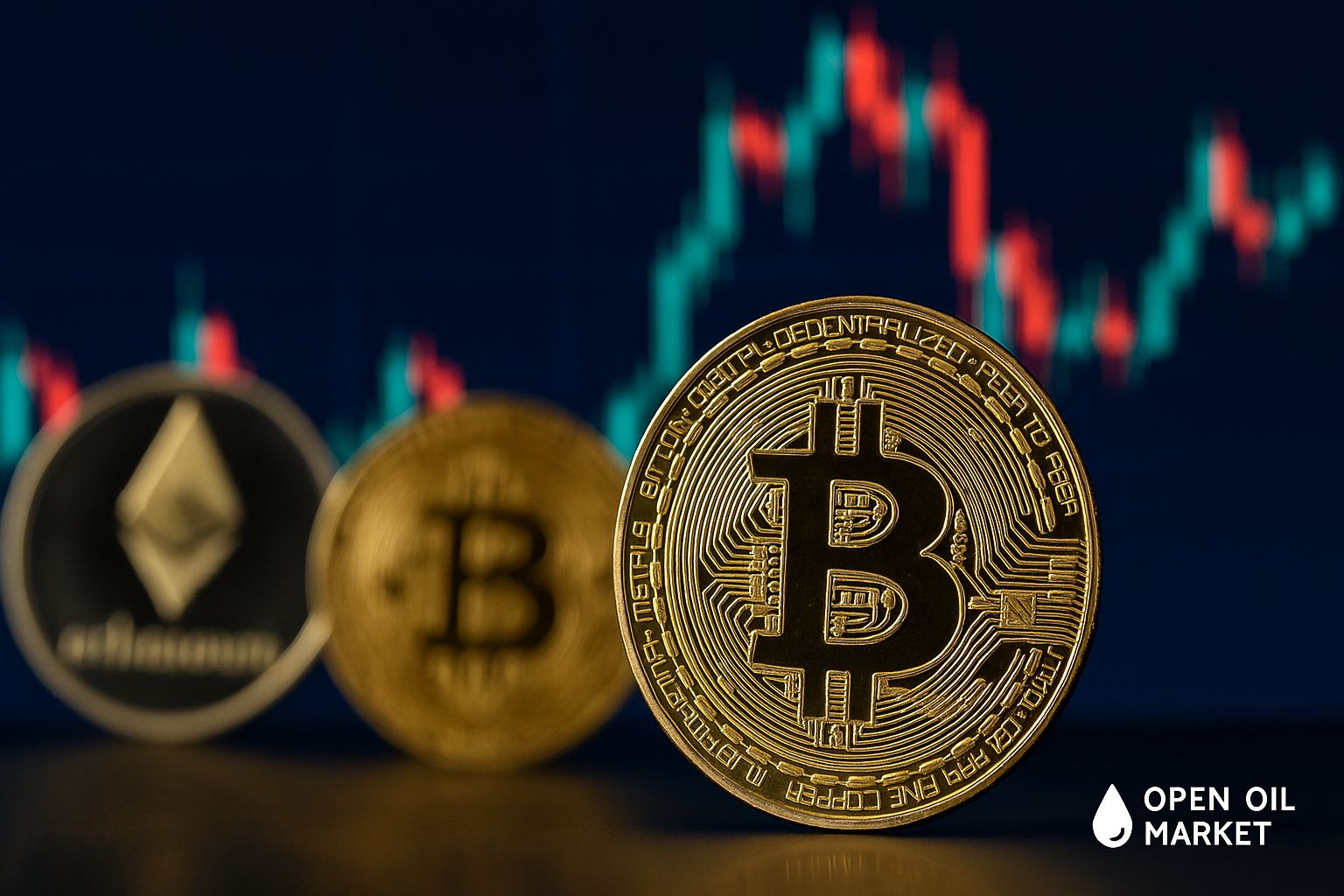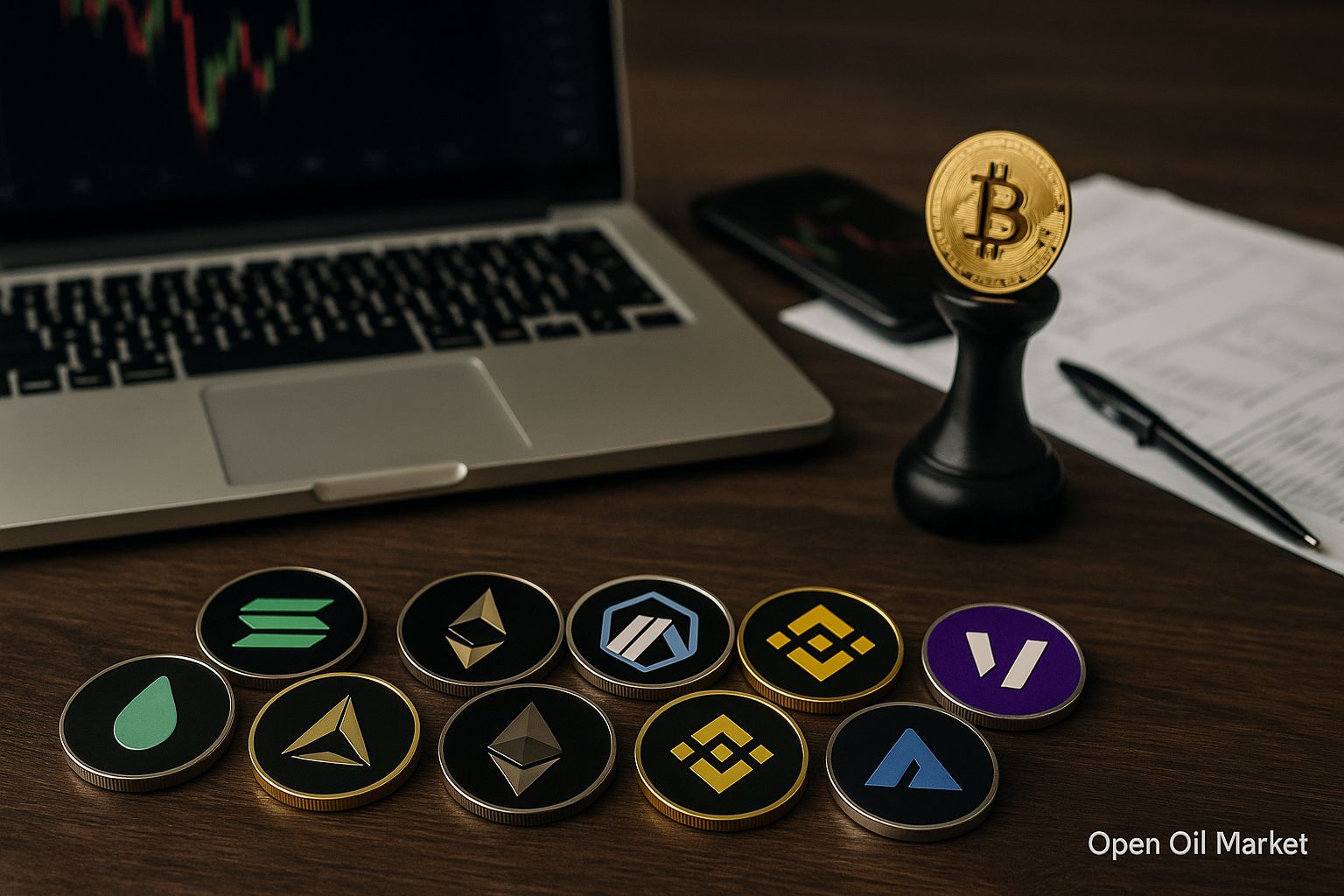
Detailed Review of Leading Futures Crypto Platforms by Fees and Liquidity: Hyperliquid, Jupiter, EdgeX, Aster, Lighter, ApeX, GMX, Drift, dYdX and Others.
In the world of cryptocurrencies, specialized platforms for trading perpetual futures are gaining popularity. We have prepared an overview of the top services – futures platforms that have generated record amounts in commission fees over the past month. These crypto exchanges offer various advantages: from zero fees and deep liquidity to multi-chain ecosystems and trading of tokenized stocks. We will discuss the key features of each platform in simple terms, making your crypto trading effective and convenient.
Top Futures Platforms and Their Features
High-Speed Next-Gen DEXs (Hyperliquid, EdgeX, Lighter, Extended)
Several modern decentralized exchanges (DEXs) aim to provide speed and user experience comparable to centralized platforms while maintaining self-custody of funds. They operate on their own blockchains or layer-two solutions, giving them a performance edge.
- Hyperliquid: A decentralized exchange on its own blockchain optimized for trading. It offers a fully on-chain order book with speed like traditional exchanges. Transactions are confirmed in fractions of a second, and trade commissions are minimal. Hyperliquid combines CEX performance with DeFi transparency, allowing trading of over 100 pairs with leverage up to 50x without the need to trust intermediaries.
- EdgeX: A perpetual platform based on Ethereum Layer-2 (ZK-rollup technology), offering a trading experience akin to that of a classic exchange. Users maintain control over their assets, and orders are processed in milliseconds. Fees here are extremely low (~0.012% maker and 0.038% taker), supporting leverage up to 100x and over 160 markets ranging from BTC and ETH to popular altcoins. EdgeX is a decentralized crypto exchange with speed and depth comparable to top CEXs.
- Lighter: An innovative DEX based on its own ZK-rollup on Ethereum. It is notable for having effectively zero crypto trading fees for regular traders – fees apply only to API traders and large high-frequency players. Lighter provides the highest speed and confirms all operations with cryptographic proofs. The order book and liquidations are verifiable on the blockchain, ensuring fairness. The platform went live in mainnet in 2025 and quickly attracted attention for its zero-fee policy and transparency.
- Extended: A perpetual exchange on the StarkNet (Ethereum L2) network created by a team of fintech alumni. Extended offers a completely on-chain experience with instant order execution (under 10 ms) and no gas costs for traders. The platform supports leverage up to 50x and over 50 trading pairs. A unique feature is “hidden orders,” allowing large players to mask their volume on the book and avoid market impact. Extended seeks to combine the best of CeFi and DeFi: speed like Coinbase with full user self-custody.
Multi-Chain Platforms for Derivatives (Aster and ApeX)
These platforms operate across multiple networks, simplifying access and enhancing liquidity. They allow trading on various blockchains without complex bridges, offering a unified experience for users.
- Aster: A next-generation decentralized exchange operating on multiple blockchains – BNB Chain, Ethereum, Solana, Arbitrum, and others. Aster offers both a standard mode for experienced traders (order book, leverage up to 100x) and a simplified mode with ultra-high leverage of 1001x for one-click fast trades. Aster also implements unique features: it allows staking assets and stablecoins with yield as collateral, enabling users to continue earning interest while trading. The platform is known for low base fees (from 0.01% per order) and high liquidity due to its multi-network pool integration. Users can even trade U.S. tokenized stocks calculated in crypto, such as opening positions on Tesla or Nasdaq 100 24/7.
- ApeX Protocol: A multi-chain derivatives platform with the slogan “Built for Traders, Owned by Traders.” Initially launched on Arbitrum as ApeX Pro using StarkEx technology, it evolved in 2024 into ApeX Omni – a unified cross-chain system. Now, users can trade futures across various blockchains from a single interface without experiencing boundaries between networks. ApeX supports crypto pairs, some tokenized stocks, and even prediction markets. The governing token APEX is used for community voting and rewards. The main advantage of ApeX is its professional functionality (order book, stop orders, cross-margin) while maintaining complete decentralization, with orders processed by a network of validators and assets stored in user wallets.
Solana Ecosystem: Perpetual Exchanges Jupiter and Drift
The Solana network is known for its low latency (~0.1 seconds) and absence of high fees, making it attractive for derivative DEXs. Two platforms from our ranking operate within the Solana ecosystem, offering quick on-chain trading of futures.
- Jupiter: Initially gaining fame as a DEX aggregator for instant token swaps on Solana, Jupiter has now launched the Jupiter Perps section for futures trading. The platform utilizes price oracles instead of a classic order book, simplifying entry for newcomers. Jupiter allows trading of main crypto assets (SOL, BTC, ETH, etc.) with leverage up to 250x. Built-in integration into Solana wallets facilitates convenience, allowing users to open positions directly through a familiar interface. Thanks to Solana's high speed, updates on positions and margins occur almost instantly, and fees are minimal (only network fees with no platform markup).
- Drift: The largest open perp exchange on Solana, offering advanced trading functionality. Drift operates on a virtual AMM model (dAMM), where liquidity automatically adjusts according to market conditions. This ensures deep order books and minimal slippage for popular pairs. Traders can use cross-margin – a single account for all positions – and leverage up to 100x. Drift's unique feature is yield farming within the platform: the USDC you deposit can generate passive income while you trade. Quick order execution on Solana and price oracles (Pyth) make trading smooth. After the collapse of Mango Markets, Drift established itself as a reliable alternative for derivatives in the Solana network, focusing on security and transparency.
24/7 Trading of Stocks and Currencies (TradeXYZ and Avantis)
These platforms provide crypto traders access to traditional markets – stocks, indices, currency pairs, and commodities – through perpetual contracts. This means you can speculate on, for instance, the value of the dollar or Tesla stock around the clock without needing to access traditional exchanges.
- TradeXYZ: A perpetual platform built on the Hyperliquid blockchain. It allows trading not only cryptocurrencies but also various assets, including stocks. For example, TradeXYZ launched a perpetual contract XYZ100 on the NASDAQ-100 index (top 100 U.S. stocks), which traded tens of millions of dollars in volume within the first days. The platform's feature is 24/7 access to the stock market via a crypto interface. Users just need to connect their wallet to open a position on Apple or S&P500 as easily as on Bitcoin. Additionally, TradeXYZ remains a non-custodial service: all transactions are conducted through Hyperliquid, ensuring high liquidity and low fees. Leverage is offered for both crypto and stocks, with some of the lowest fees in the industry.
- Avantis: A decentralized perpetual exchange on the Base network (a layer two by Coinbase). Avantis attracts traders with zero trading fees and a very high maximum leverage of up to 500x. The platform supports various markets: cryptocurrencies, Forex pairs (fiat currencies), and commodity indices. Avantis' unique liquidity model is a single USDC vault from which resources for all transactions are drawn, increasing capital efficiency and providing a low spread across 80+ markets. The exchange does not charge traders any fees (only a percentage of profits from successful trades), positioning itself as a “zero-fee” exchange. The project is supported by major funds and Coinbase Base itself, adding to its credibility. Avantis enables trading, for example, of gold or the euro to dollar exchange rate for crypto, using a familiar decentralized exchange interface without time trading restrictions.
Trading Directly from Wallets (Phantom and Based)
A separate trend is the integration of futures trading into user wallets and mobile applications. Such solutions make the process even simpler: there is no need to switch to an exchange, just use the embedded service in your wallet.
- Phantom: One of the most popular Solana wallets has expanded its functionality and launched an integrated feature for trading perpetuals. Phantom users (currently in the EU) can open long and short positions directly in the app with leverage up to 40x. Behind the scenes, the wallet uses the Hyperliquid API, but all of this happens seamlessly for the trader. You still retain your keys, while Phantom acts as an interface and sends transactions. There’s no need to create a separate account on an exchange – crypto trading is integrated into the wallet. The interface is simple and user-friendly, with real-time notifications and options to set stop-loss and take-profit. This approach demonstrates how crypto wallets are evolving into universal financial applications.
- Based (BasedApp): A crypto "super-app" that combines exchange functions and payment services. Based allows trading on Hyperliquid (spot and futures) directly from its interface, as well as issuing a personal Visa crypto card for spending funds. The idea is for users to invest and spend cryptocurrency in regular stores all in one place. The platform does not hold your funds – trading occurs through wallet connection, on a decentralized basis. At the same time, Based aims to provide banking-quality services: a convenient mobile app, analytics, customer support. The project has garnered investment from major crypto funds (Hashed, DeFiance, etc.) and is gaining popularity among a broad audience that values both security and comfort. Essentially, BasedApp brings crypto derivatives closer to the average user by removing unnecessary technical barriers.
GMX – Decentralized Exchange with Liquidity Pool
GMX is a well-known platform for perpetual trading, initially launched on Arbitrum and Avalanche. Unlike the classic order book, GMX uses a liquidity pool model: traders trade against a shared pool of assets (GLP) consisting of several cryptocurrencies and stablecoins. This ensures constant liquidity and instant trade execution at market prices (prices are determined by oracles). Traders can open positions with leverage up to 50x on popular coins (BTC, ETH, etc.) directly from their wallets – the platform is fully decentralized and does not require registration. Fees on GMX are competitive, and importantly, they are distributed among the community: GMX token holders receive ~30% of all fees, while liquidity providers (GLP holders) receive about 70% of the exchange's earnings. This makes GMX attractive not only for traders but also for investors wanting to earn passive income from crypto fees. A user-friendly interface, absence of KYC, and stable performance have made GMX one of the most popular decentralized exchanges for crypto futures trading.
dYdX – A Veteran in the Decentralized Derivatives Market
dYdX is one of the first and most recognized platforms for trading crypto derivatives. Originally, dYdX operated as a protocol on Ethereum (via ZK-rollup StarkWare) and gained fame for offering a genuine order book and high liquidity in the DeFi segment. In 2023–2024, the project took a step toward full decentralization by launching its own chain based on Cosmos. Now, dYdX is an independent blockchain (app-chain), where all network nodes support the order book and matching of trades. The platform offers perpetual contract trading on dozens of assets with leverage up to 20x–25x, fast execution comparable to centralized exchanges. For small trading volumes, fees may not be charged at all (dYdX introduced zero fees for newcomers within certain limits), while large traders operate under a tiered system with very low rates. The DYDX token is used for governance and staking in the network. dYdX is known for having active professional market makers, ensuring tight spreads and a large volume of orders in the book. If you are looking for a decentralized alternative to giants like Binance for crypto trading with leverage, dYdX is an excellent option, combining blockchain reliability with the rich functionality of an exchange.
Paradex – Zero Fees and Privacy
Paradex is an ultra-modern perp exchange that can be termed a “super-exchange.” It is built on its own Layer-2 solution (DimeVM, secured by Ethereum) and incorporates several cutting-edge ideas. First, Paradex does not charge commissions from retail traders at all – neither maker nor taker (like Lighter, it earns from services for professional traders). Secondly, the platform provides institutional-level privacy: zk-encryption hides details about your positions, entry points, and liquidation sizes. This way, large players are protected from being “hunted” for their stop-losses. Thirdly, Paradex offers a unique tool – perpetual options. Essentially, these are options without expiration dates: traders pay a higher funding fee but face less risk of liquidation, as with regular futures. This product provides higher leverage under limited risk. The Paradex platform launched in mid-2025 with support from the Paradigm fund and immediately showcased trading volumes in the tens of millions of dollars daily. It offers over 250 markets (futures, perpetual options, and even spot) from a single margin account. Technologically, Paradex is impressive: up to 1000 TPS, finality of ~2 seconds, accounts as smart contracts (supports gasless trading and multi-signature). To put it simply – Paradex aims to give traders everything at once: lightning speed, zero fees, privacy, and a rich selection of instruments. This platform is already showcasing what the future of decentralized exchanges may look like.




